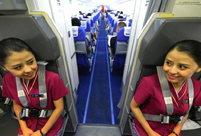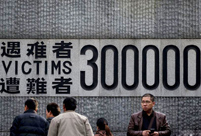 Most amazing chi-pao beauties
Most amazing chi-pao beauties
 Observe the earth from space
Observe the earth from space
 Chinese lingerie brand arrives in Las Vegas
Chinese lingerie brand arrives in Las Vegas
 In pics: YOG prism
In pics: YOG prism
 Amputee girl reaches top of half-left tower in Jiangxi
Amputee girl reaches top of half-left tower in Jiangxi
 Yardangs in Lop Nur
Yardangs in Lop Nur
 Intoxicating Ayding Lake in Xinjiang
Intoxicating Ayding Lake in Xinjiang
 Beijing's MJ impersonator a 'thriller' for crowds
Beijing's MJ impersonator a 'thriller' for crowds
 Armed police compete on the plateau
Armed police compete on the plateau
 Rubber Duck settles in Guiyang new urban area
Rubber Duck settles in Guiyang new urban area
BEIJING, Sept. 4 -- China plans to overhaul university enrollment quotas as the government engages in the most "comprehensive" reforms since 1977.
Facing vast regional differences in quality and access to universities, the government is planning a sweeping rework of the education system by 2020, aiming to ease college entrance exam pressures and enable more enrollment from underdeveloped areas.
It will be "the most comprehensive" reform since China resumed the national college entrance examination in 1977 following the decade-long Cultural Revolution (1966-1976), said Du Yubo, vice minister of education, at a news conference Thursday.
College enrollment opportunities vary in different parts of China due largely to gaps in development and population. The government has worked on narrowing regional disparity in education for years, Du said.
The average enrollment rate following the 2013 college entrance exam was 76 percent, with the lowest region enrolling 70 percent. The six percent gap between the highest and lowest enrollment rate was down from a 17 percent gap in 2007.
Du says their target will be "less than four" by 2017.
Measures to equalize the playing field have also been taken with plans to adjust the allocation of enrollment quotas in order to increase enrollment rates in central, western and populous regions, Du said.
The current quota requires all universities admit a flat number of students from non-local provinces each year.
But students from heavily populated provinces, such Shandong and Henan, complain this makes competition too fierce, with tens of thousands of graduates vying for a limited number of slots for local students.
Du says making quotas more transparent is an important step in revising the quota system.
However, Central and western students will continue to enjoy preferable policies in college enrollment, he said, adding that roughly 200,000 students have benefited from the support plan this year.
The government will also help more students from poorer provinces get into top universities.
Although the percentage of village students entering universities is similar to urban students, much fewer village students go to top schools due to a gap in quality of primary and high school education.
One new reform requires first-class universities allocate a certain quota for students from poor, remote and ethnic minority regions. The new policy saw enrollment rates from rural areas grow by 11.4 percent year on year, with roughly 50,000 students from across 832 impoverished counties in 22 provinces gaining entrance to top universities, Du said.
 "Twin flowers" bloom in the air
"Twin flowers" bloom in the air China names 80 Anti-Japanese War memorial sites
China names 80 Anti-Japanese War memorial sites The 4th China-Eurasia Expo opens in Urumqi
The 4th China-Eurasia Expo opens in Urumqi Tall girls shine at model competition
Tall girls shine at model competition Girl who cannot gain weight: She is 1, 2.9 kilograms
Girl who cannot gain weight: She is 1, 2.9 kilograms Bazinga! Watch out the 'facekini' fashion bomb attack
Bazinga! Watch out the 'facekini' fashion bomb attack Experiencing maiden voyage between Sanya and Xisha
Experiencing maiden voyage between Sanya and Xisha Chinese inflatable aircraft meets public for the first time
Chinese inflatable aircraft meets public for the first time People enjoy delicacies in Tianjin undersea tunnel
People enjoy delicacies in Tianjin undersea tunnel Capital Spirits: the capital's first liquor bar
Capital Spirits: the capital's first liquor bar 2014 int’l drone exhibition
2014 int’l drone exhibition Chengdu International Auto Show
Chengdu International Auto Show Trainings taken by Chinese navy divers
Trainings taken by Chinese navy divers Anti-terrorism electric patrol car
Anti-terrorism electric patrol car Female PLA honor guards
Female PLA honor guardsDay|Week|Month